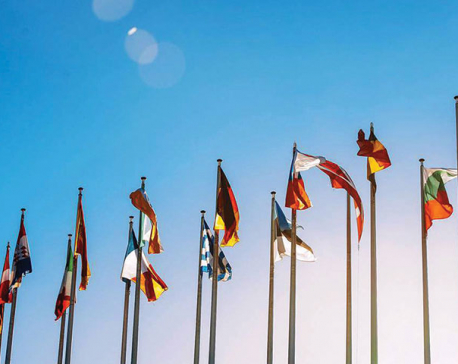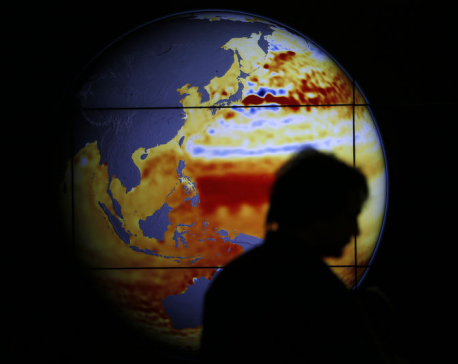
OR
‘Increasing tropospheric ozone affecting Nepal’s population, agriculture’
Published On: September 16, 2019 08:14 AM NPT By: Aditi Baral
KATHMANDU, Sept 16: After a continuous struggle for over three decades to protect the depleting ozone layer, the UN has set “32 years and healing” as its slogan this year to observe the International Day for Preservation of Ozone Layer.
The ‘Montreal Protocol’ on substances that deplete the ozone layer was first signed on August 26, 1987, and it was decided to celebrate the International Day for the Preservation of the Ozone Layer on September 16 every year. According to scientists, the ozone layer depletion is considerably slowing down in the recent years.
According to the UN, the theme was selected to celebrate over three decades of remarkable international cooperation to protect the ozone layer and climate change under the Montreal Protocol.
“As a result of Montreal Protocol, which mandated the phase out of ozone depleting substances, over the past decade, depletion of the ozone hole has lessened and the ozone hole is healing, which is a good thing,” said Aranico Pandey, atmospheric scientist working in Kathmandu.
Ozone (O3) is a highly reactive gas whose molecules are comprised of three oxygen atoms. Ozone’s concentration in atmosphere naturally fluctuates depending on season and latitudes. Ozone layer is an important layer as it absorbs the sun’s ultraviolet radiation and protects our planet from harmful effects of ultraviolet rays. Ozone layer was found stable when global measurements began in 1957. However, research in the 1980s showed signs of trouble.
What caused the depletion in the protective layer was the number of commonly used chemicals, specifically the Halons, chlorofluorocarbons (CFCs) and hydro chlorofluorocarbons (HCFCs). It is because of their relative stability these chemicals rise to the stratosphere where they get broken by the Sun’s UV rays, causing these chemicals to release free chlorine. This released chlorine then reacts with oxygen, gradually causing depletion in the ozone layer.
The Montreal Protocol was ratified in 1987 by all 197 UN member countries with an expectation that there would be almost full recovery of the ozone layer by the middle of the 21st century.
Although the effects of ozone layer depletion is still relatively high in few areas including Australia, Chile, Argentina, South Africa and New Zealand, its effect is comparatively less in Nepal.
“Depletion of the ozone layer is more severe in polar regions, so Nepal is less affected than countries at high latitudes. However, what is of concern to Nepal is the troposphere ozone – the ozone near the ground rather than in the stratospheric layer. This has been increasing, which is bad for human health and agriculture,” Pandey added.
However, some of the gases initially used as substitutes for ozone depleting substances had the unintended consequence of adding onto climate change. But, later, they were addressed by the recent “Kigali Amendment” to the Montreal Protocol. Depletion of ozone layer is less severe today than a decade ago, studies have shown.
You May Like This

Agenda for Europe
AMSTERDAM – The European Union has spent much of the past decade managing crises, and has even faced a possible... Read More...

Climate change takes toll on French oyster farmers
Gulping down oysters has long been a favourite New Year's Eve ritual for the French, but as winters get warmer... Read More...

Pacific leaders seek U.S. return to Paris climate pact
SYDNEY, Sept 7: Pacific island nations declared climate change to be their “single greatest threat”, urging Washington to return to... Read More...




Just In
- Govt receives 1,658 proposals for startup loans; Minimum of 50 points required for eligibility
- Unified Socialist leader Sodari appointed Sudurpaschim CM
- One Nepali dies in UAE flood
- Madhesh Province CM Yadav expands cabinet
- 12-hour OPD service at Damauli Hospital from Thursday
- Lawmaker Dr Sharma provides Rs 2 million to children's hospital
- BFIs' lending to private sector increases by only 4.3 percent to Rs 5.087 trillion in first eight months of current FY
- NEPSE nosedives 19.56 points; daily turnover falls to Rs 2.09 billion















Leave A Comment